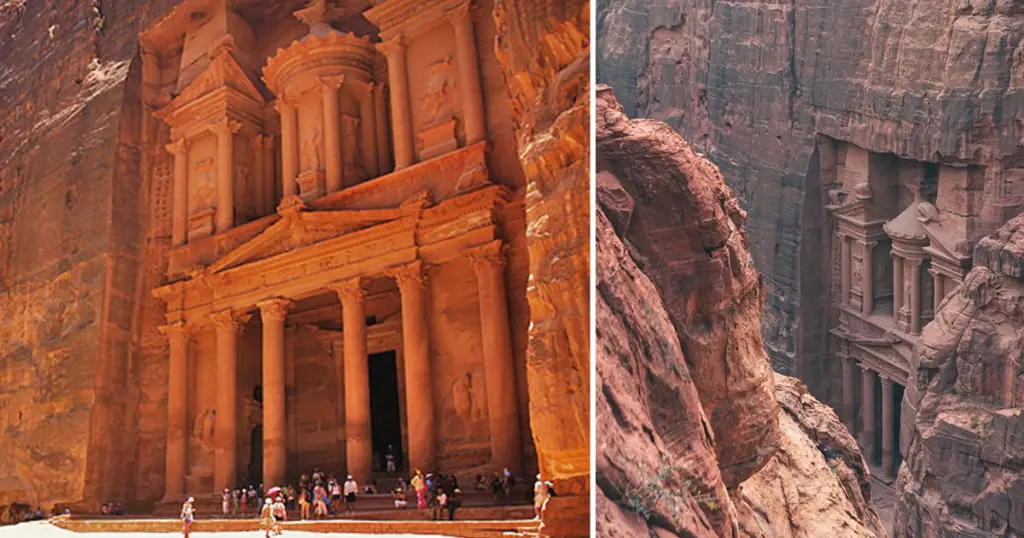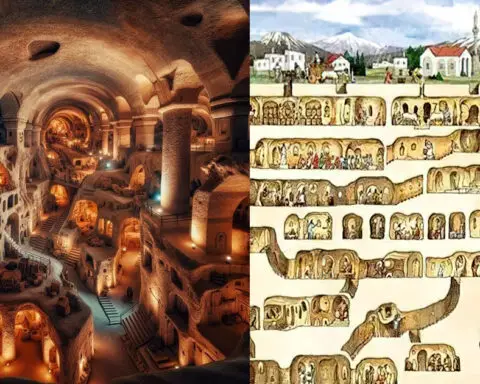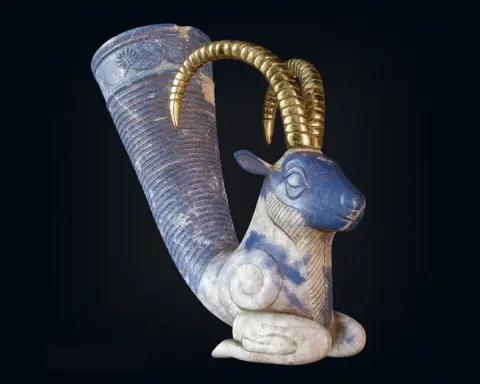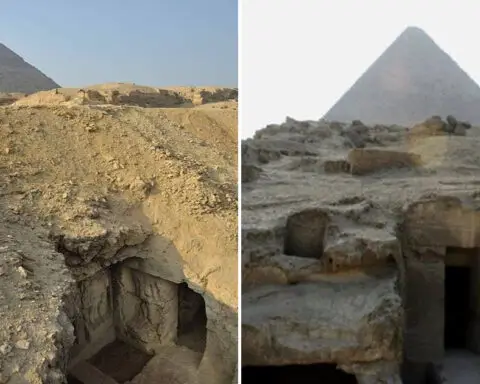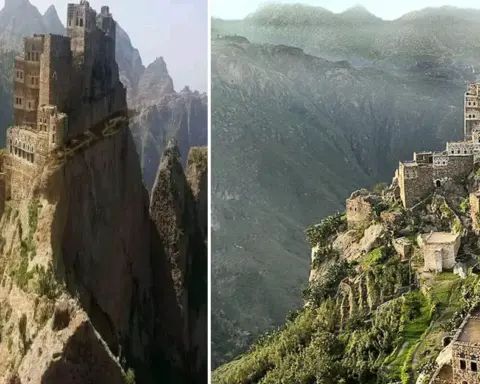Nestled amidst Jordan’s rugged desert lies Petra, an enigmatic city hailed as a UNESCO World Heritage Site and one of the globe’s most mesmerizing archaeological wonders. What sets Petra apart isn’t just its stunning natural backdrop but primarily its colossal megalithic structures carved meticulously into rose-red sandstone cliffs—a testament to the architectural brilliance of its ancient inhabitants. Yet, amidst these marvels, lingers a question: why were these magnificent structures abandoned before completion?
At the heart of Petra stands the iconic Treasury, Al-Khazneh, an architectural masterpiece chiseled directly into the sandstone rock face. Rising over 100 feet tall, this monumental facade boasts intricate carvings, captivating historians and travelers alike for centuries. Though its purpose remains shrouded in mystery, many believe it served as a tomb or temple.

Beyond the Treasury lies the Street of Facades, unveiling a series of towering tombs adorned with ornate columns and intricate facades—a poignant testament to Petra’s funerary customs. These grand structures, like the Royal Tombs, stand as solemn guardians of Petra’s history, etched into cliffs with unparalleled precision.
Further exploration uncovers the Theater, a grand amphitheater carved into the mountainside. With a seating capacity of around 4,000 people, it speaks volumes about the city’s vibrant cultural life, once resonating with performances that reverberated through the stone chambers.

However, amid these wonders stand some of Petra’s most intriguing yet unfinished structures, offering a unique glimpse into the Nabateans’ architectural process. The Unfinished Tomb, for instance, provides fascinating insight into the techniques used to carve these monumental structures. Left partially completed, it reveals the intricate steps involved in shaping solid rock into intricate architecture.
Another unfinished wonder, the Palace Tomb, is marked by its sheer size and the visible tool marks on its facade. The precision and scale of the carvings highlight the architects’ ambition, yet their incomplete state hints at an abrupt halt in construction, freezing a silent narrative in time.

The Great Temple, an expansive complex intended as a grand sanctuary, stands as another testament to Petra’s unfinished legacy. Its colossal columns and elaborate carvings reflect the envisioned grandeur that was never fully realized.
The mysteries behind these unfinished structures spark inquiries into the sudden cessation of construction, leading to theories of economic downturns, political instability, or seismic disruptions that might have prompted the abandonment of these ambitious projects.

Petra’s ancient builders employed innovative techniques, using simple tools like hammers, chisels, and wedges to meticulously carve rock, showcasing a blend of artistic finesse and engineering prowess.
Beyond their sheer size and architectural grandeur, Petra’s megalithic structures stand as a testament to human creativity and resilience, preserving the rich history and cultural heritage of the ancient Nabatean civilization through time’s passage.
As visitors traverse the narrow Siq, the winding canyon leading to the ancient city, and witness the majesty of these unfinished monuments, they become witnesses to a past that continues to hold its secrets, inviting exploration and evoking a sense of wonder at our ancestors’ remarkable achievements.
Petra, with its breathtaking beauty and tales frozen in stone, remains an enduring symbol of human endeavor and ingenuity.
In conclusion, the question of why Petra’s ancient megalithic structures were abandoned before completion remains an enthralling mystery. While theories abound, the true reasons behind their desertion may forever elude us. Nevertheless, these unfinished structures continue to captivate and inspire, standing as enduring symbols of the ancient Nabateans’ ingenuity and ambition.
VIDEO:

